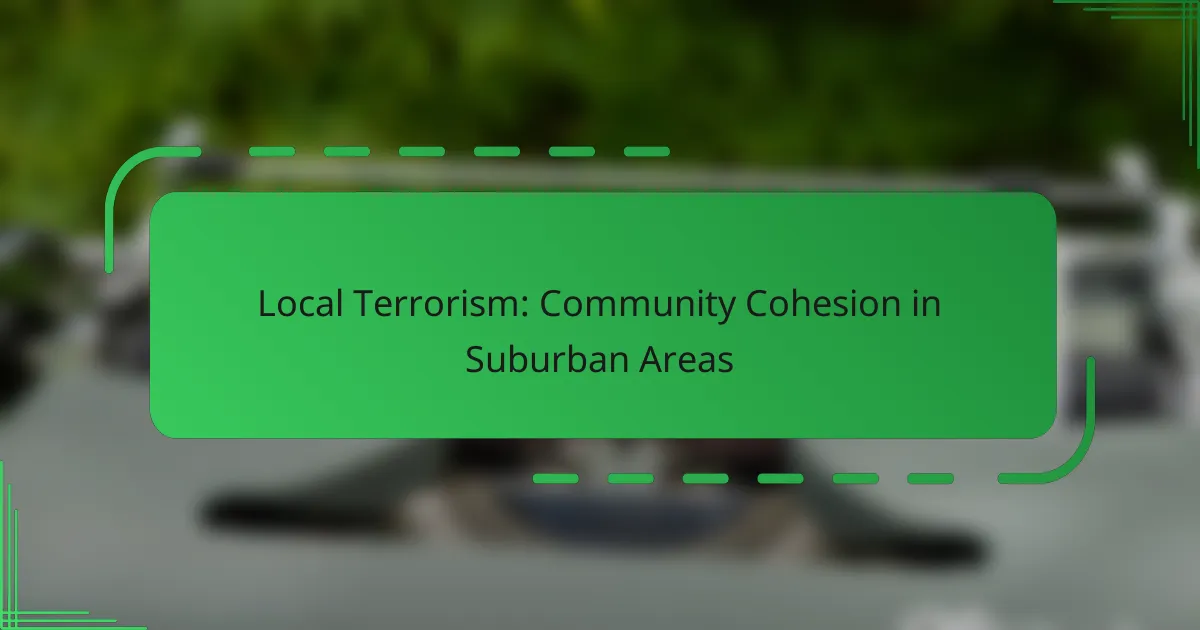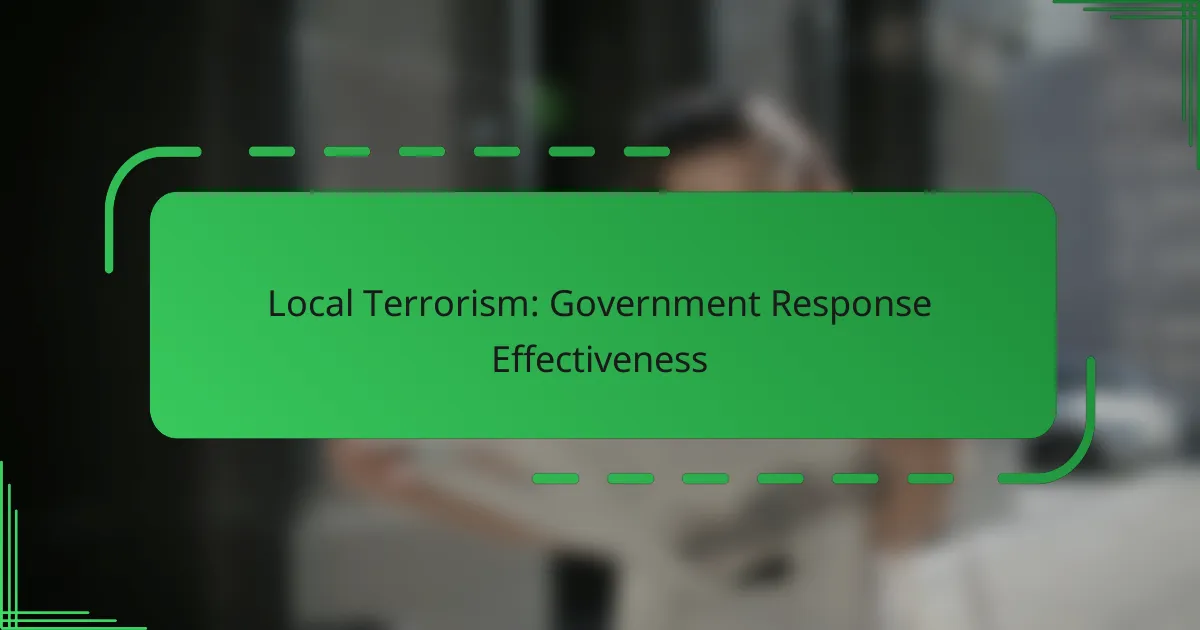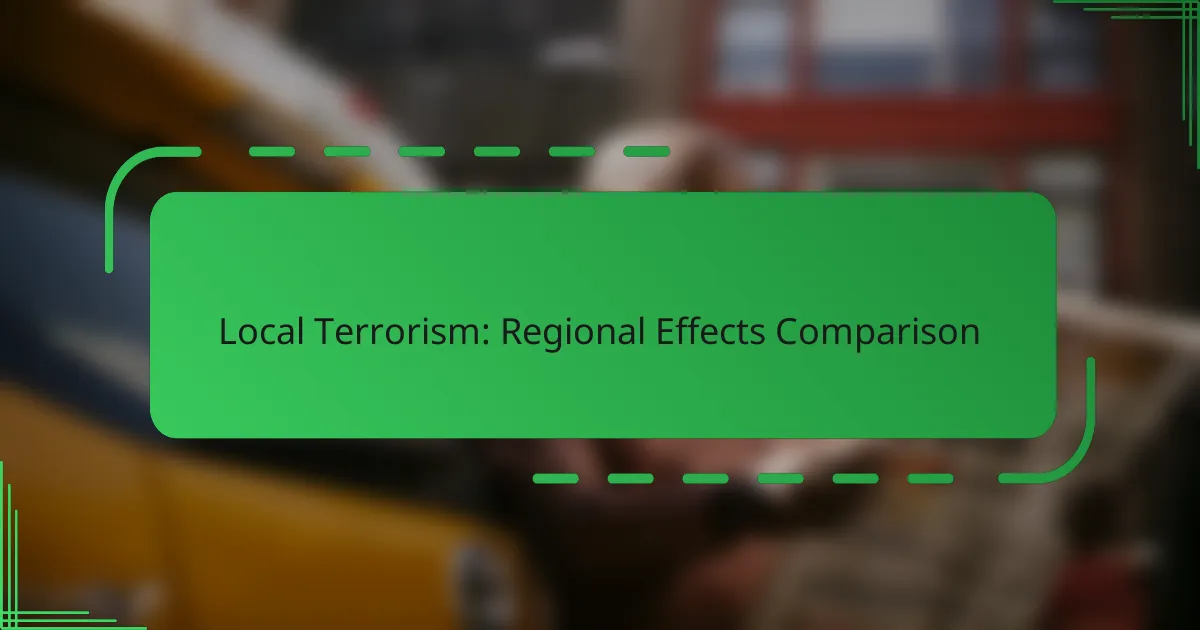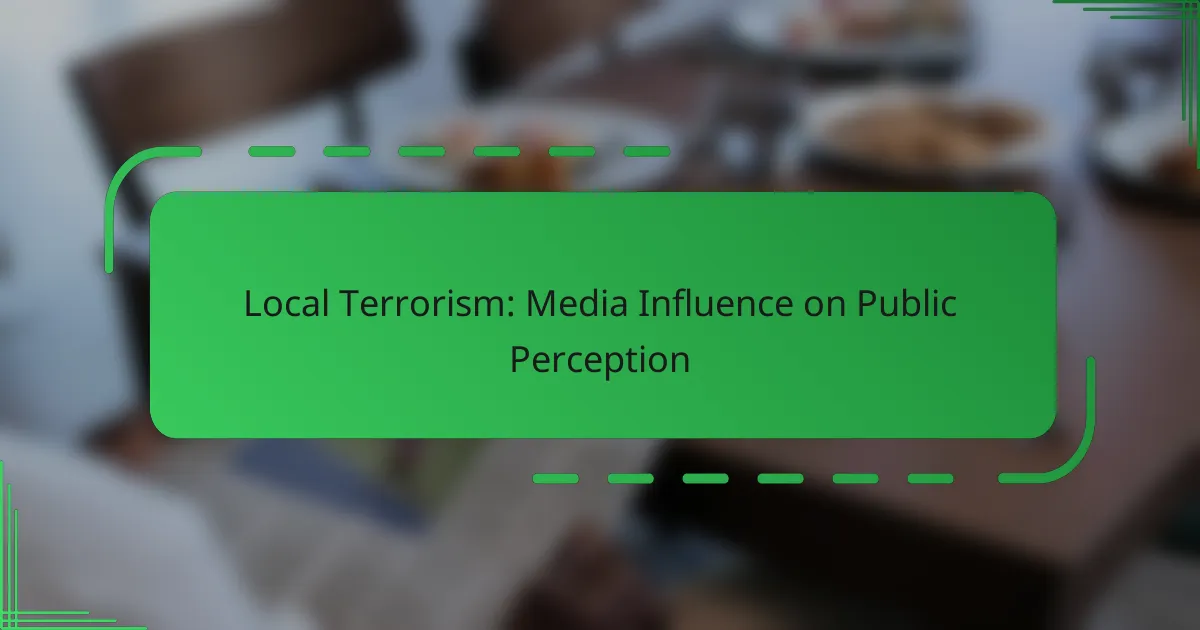Local terrorism poses a significant threat to suburban communities, making it essential for residents to cultivate strong relationships and a sense of unity. By fostering collaboration and vigilance, these communities can effectively enhance their resilience against potential threats. Proactive measures, supported by local governments and educational initiatives, play a vital role in empowering residents to respond to and prevent acts of terrorism.
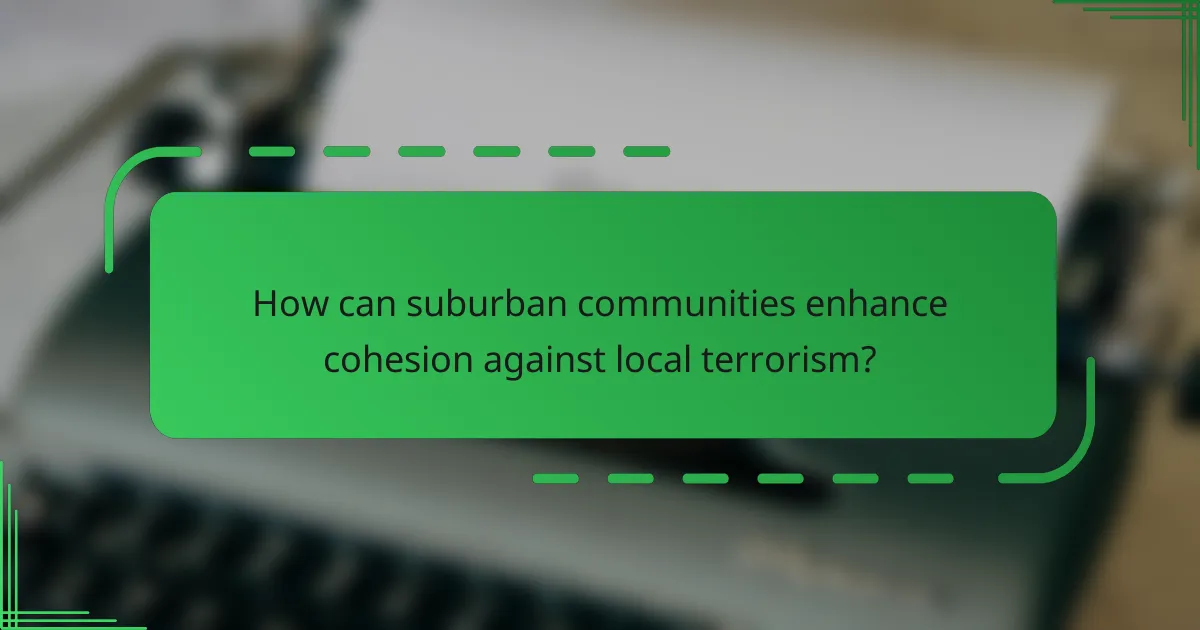
How can suburban communities enhance cohesion against local terrorism?
Suburban communities can enhance cohesion against local terrorism by fostering strong relationships among residents, promoting vigilance, and creating a united front. This can be achieved through various initiatives that encourage participation and collaboration among community members.
Community engagement programs
Community engagement programs focus on building trust and communication among residents. These programs can include regular town hall meetings, social events, and volunteer opportunities that bring people together to discuss safety concerns and share resources.
For effective engagement, consider organizing events that cater to diverse interests, such as family-friendly activities, cultural festivals, or educational workshops. This diversity can help attract a wider audience and strengthen community bonds.
Neighborhood watch initiatives
Neighborhood watch initiatives empower residents to take an active role in monitoring their surroundings and reporting suspicious activities. By forming small groups, neighbors can establish communication channels and share information about safety concerns.
To start a neighborhood watch, gather interested residents and hold an initial meeting to discuss goals and strategies. It’s essential to establish clear guidelines for reporting incidents and to maintain regular communication through newsletters or social media groups.
Collaborative safety workshops
Collaborative safety workshops provide residents with practical skills and knowledge to enhance community security. These workshops can cover topics such as emergency preparedness, conflict resolution, and recognizing signs of radicalization.
Invite local law enforcement or safety experts to lead these workshops, ensuring that participants receive credible information. Offering incentives, such as refreshments or community service credits, can increase attendance and participation.
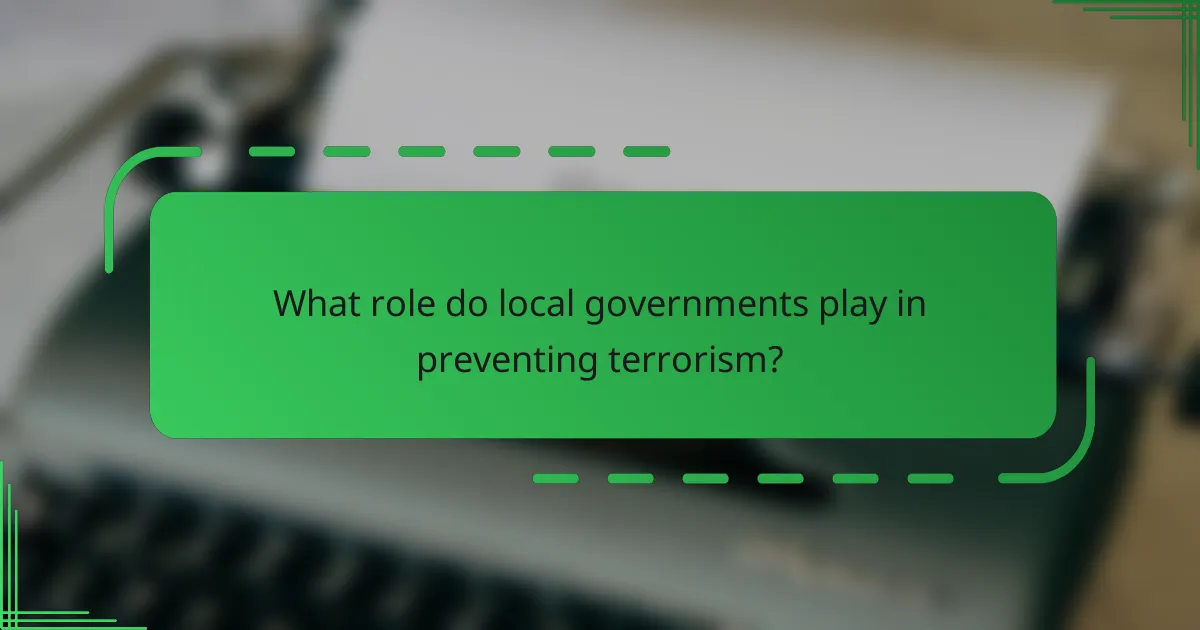
What role do local governments play in preventing terrorism?
Local governments play a crucial role in preventing terrorism by implementing policies, allocating funding, and fostering partnerships that enhance community safety. Their proactive measures can significantly reduce the risk of terrorist activities in suburban areas.
Policy development for community safety
Local governments are responsible for creating policies that promote community safety and resilience against terrorism. This includes developing emergency response plans, conducting risk assessments, and engaging with community members to identify potential threats.
Effective policies often involve collaboration with local organizations, schools, and businesses to ensure a comprehensive approach. Regular training and drills can help prepare residents and first responders for potential incidents.
Funding for anti-terrorism initiatives
Local governments allocate funds for various anti-terrorism initiatives, which may include surveillance systems, community outreach programs, and educational campaigns. These investments are essential for enhancing security measures and building community awareness.
Funding can come from local budgets, state grants, or federal programs aimed at countering terrorism. It’s important for local officials to prioritize spending on initiatives that have proven effective in similar communities.
Partnerships with law enforcement
Establishing strong partnerships with law enforcement agencies is vital for local governments in their fight against terrorism. These collaborations can facilitate information sharing, joint training exercises, and coordinated response strategies.
Local governments should work closely with police departments to develop community policing initiatives that foster trust and communication. Engaging residents in these efforts can lead to increased vigilance and reporting of suspicious activities.

How can education promote resilience in suburban areas?
Education can foster resilience in suburban areas by equipping communities with knowledge and skills to counter radicalization. Through targeted programs, awareness campaigns, and cultural sensitivity training, residents can build stronger social ties and enhance their ability to respond to local threats.
School-based anti-radicalization programs
School-based anti-radicalization programs focus on educating students about the dangers of extremist ideologies. These programs often include workshops, discussions, and activities that promote critical thinking and empathy, helping students recognize and reject radical narratives.
For effective implementation, schools should collaborate with local law enforcement and community organizations to create a supportive environment. Regular evaluations can help refine these programs, ensuring they meet the evolving needs of students and the community.
Public awareness campaigns
Public awareness campaigns aim to inform suburban residents about the signs of radicalization and the importance of community vigilance. These campaigns can utilize social media, local events, and informational brochures to reach a broad audience.
Successful campaigns often include testimonials from community members and experts, making the message relatable. Engaging local leaders to endorse these initiatives can further enhance their impact and encourage community participation.
Workshops on cultural sensitivity
Workshops on cultural sensitivity help suburban residents understand and appreciate diverse backgrounds, which can reduce prejudice and foster inclusivity. These workshops typically cover topics such as communication styles, cultural norms, and the impact of stereotypes.
To maximize effectiveness, workshops should be interactive, allowing participants to share experiences and engage in role-playing scenarios. Regularly scheduled sessions can help maintain momentum and encourage ongoing dialogue within the community.
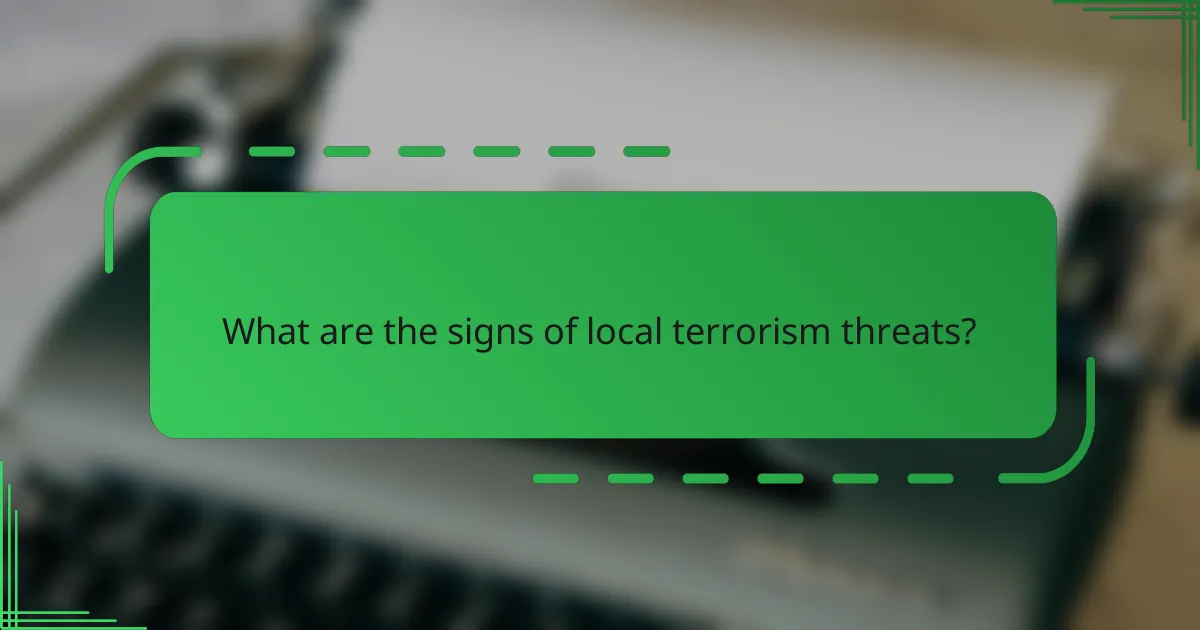
What are the signs of local terrorism threats?
Signs of local terrorism threats can manifest in various ways, often through behavioral changes and community dynamics. Recognizing these signs early can help communities respond effectively and maintain safety.
Unusual behavior patterns
Unusual behavior patterns may include individuals displaying heightened secrecy, excessive anxiety, or sudden changes in lifestyle. For instance, someone who previously engaged actively in community events may withdraw or express extreme views unexpectedly.
Look for signs such as frequent unexplained absences, changes in social circles, or an increased interest in violent ideologies. These behaviors can serve as red flags indicating potential radicalization or planning of harmful activities.
Increased surveillance in communities
Increased surveillance can be a response to perceived threats, with communities implementing measures such as enhanced security cameras or neighborhood watch programs. This heightened vigilance often reflects a collective concern about safety and potential terrorist activities.
Communities may also notice more police presence or organized patrols in response to specific incidents or threats. Engaging with local law enforcement to understand these measures can foster a collaborative approach to community safety.
Social media radicalization indicators
Social media platforms can serve as breeding grounds for radicalization, with individuals sharing extremist content or engaging in discussions that promote violence. Indicators include the frequent sharing of propaganda, recruitment messages, or expressions of hate against specific groups.
Monitoring online behavior for signs of radicalization can be crucial. Encourage community members to report concerning online activities to local authorities, fostering a proactive stance against potential threats.
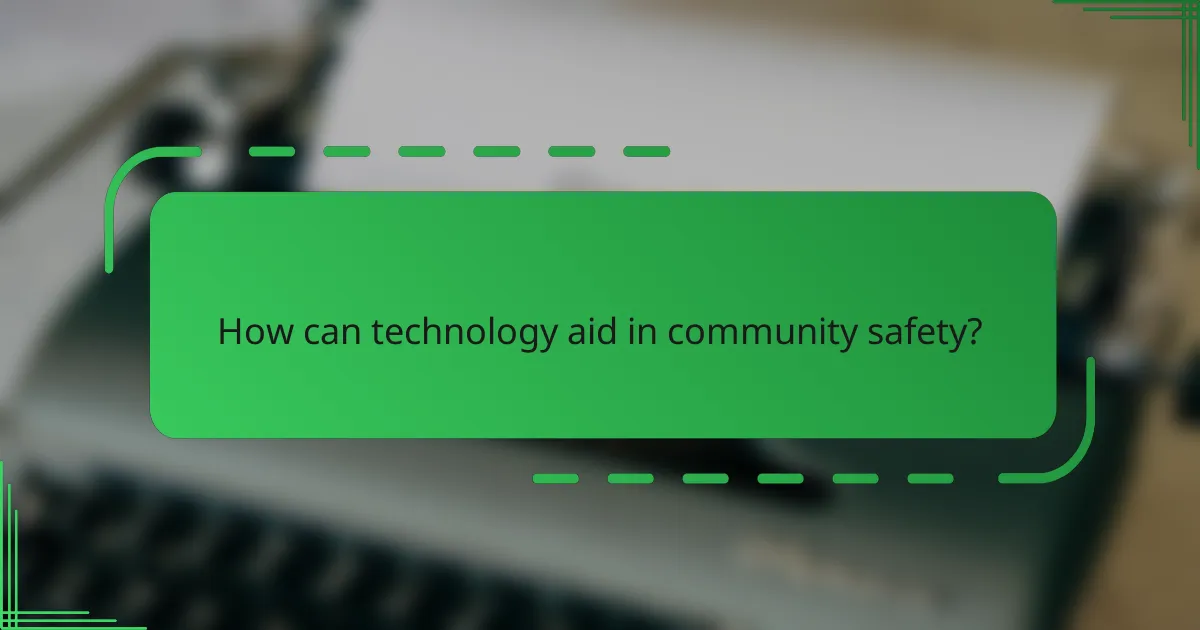
How can technology aid in community safety?
Technology can significantly enhance community safety by providing tools for monitoring, reporting, and analyzing potential threats. Implementing advanced systems allows residents to stay informed and engaged, fostering a proactive approach to security.
Surveillance systems and smart cameras
Surveillance systems equipped with smart cameras can deter criminal activity and enhance community safety. These cameras often feature real-time monitoring and can be integrated with local law enforcement databases for quick access to footage when needed.
When selecting a surveillance system, consider factors such as resolution, night vision capabilities, and storage options. Many systems allow for remote access via mobile devices, enabling residents to monitor their neighborhoods from anywhere.
Mobile apps for reporting suspicious activity
Mobile applications designed for reporting suspicious activity empower community members to alert authorities quickly. These apps typically allow users to submit photos, videos, and descriptions of incidents, facilitating faster responses from law enforcement.
Look for apps that provide anonymity for users and include features like geolocation to pinpoint incidents accurately. Encouraging community members to download and use these apps can create a more vigilant neighborhood atmosphere.
Data analytics for threat assessment
Data analytics tools can help communities assess potential threats by analyzing patterns in crime data and community reports. By identifying trends, local authorities can allocate resources more effectively and implement preventive measures.
Communities should consider collaborating with data analysts or utilizing existing software solutions that aggregate and visualize crime statistics. Regularly reviewing this data can inform safety initiatives and enhance overall community resilience.
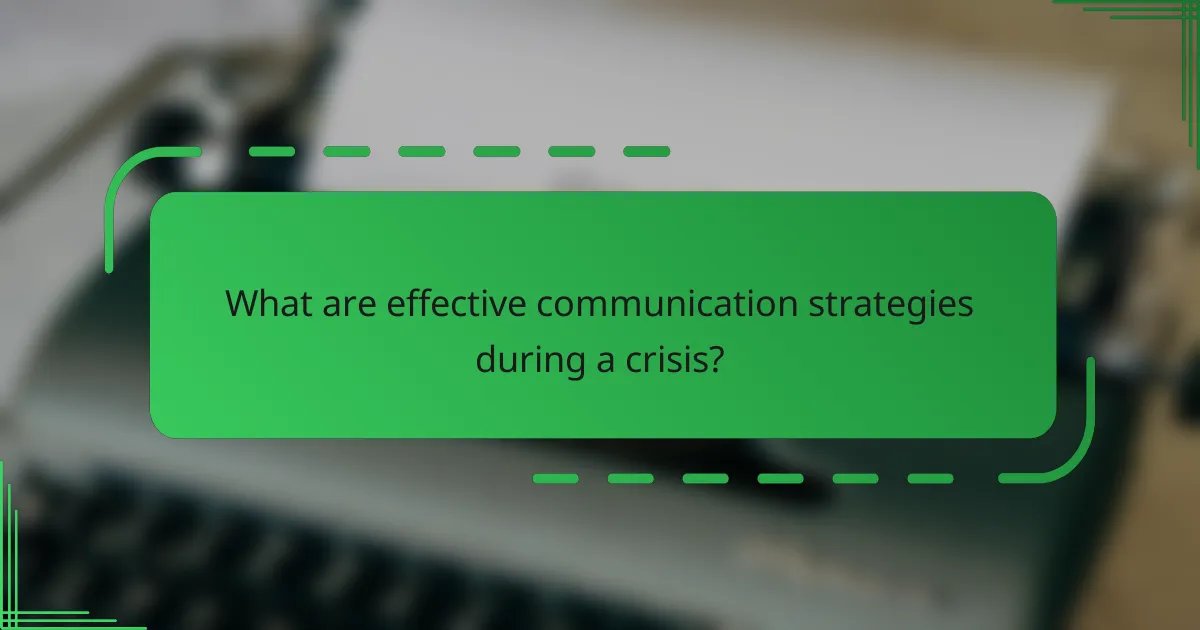
What are effective communication strategies during a crisis?
Effective communication strategies during a crisis focus on timely, clear, and accurate information dissemination to ensure community safety and cohesion. Utilizing multiple channels helps reach diverse audiences and fosters trust among residents.
Emergency alert systems
Emergency alert systems are crucial for delivering immediate information during a crisis. These systems can send notifications via text messages, emails, or automated phone calls to keep residents informed about threats or safety measures.
Communities should regularly test these systems to ensure functionality and encourage residents to sign up for alerts. Providing clear instructions on how to register can enhance participation and effectiveness.
Community information sessions
Community information sessions serve as a platform for sharing vital updates and addressing residents’ concerns. These sessions can be organized in person or virtually, allowing for broader participation.
To maximize engagement, consider scheduling sessions at convenient times and promoting them through local channels. Providing a Q&A segment can help clarify doubts and foster a sense of community solidarity.
Social media updates and engagement
Social media is an effective tool for real-time updates and community engagement during a crisis. Local authorities can use platforms like Facebook and Twitter to share information quickly and interact with residents.
Regularly posting updates and responding to community inquiries can build trust and keep the public informed. It’s essential to monitor these channels for misinformation and provide accurate corrections promptly.
